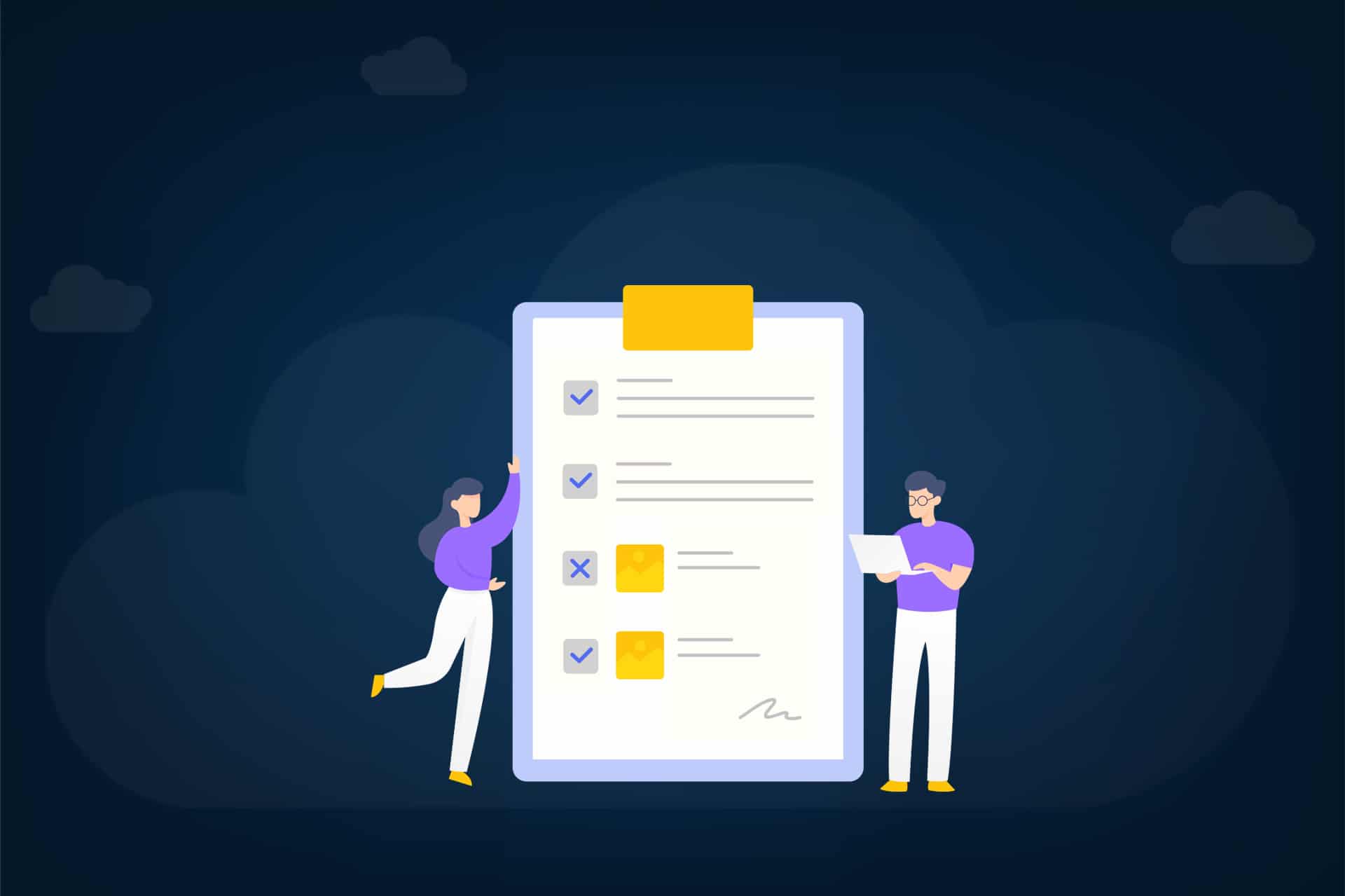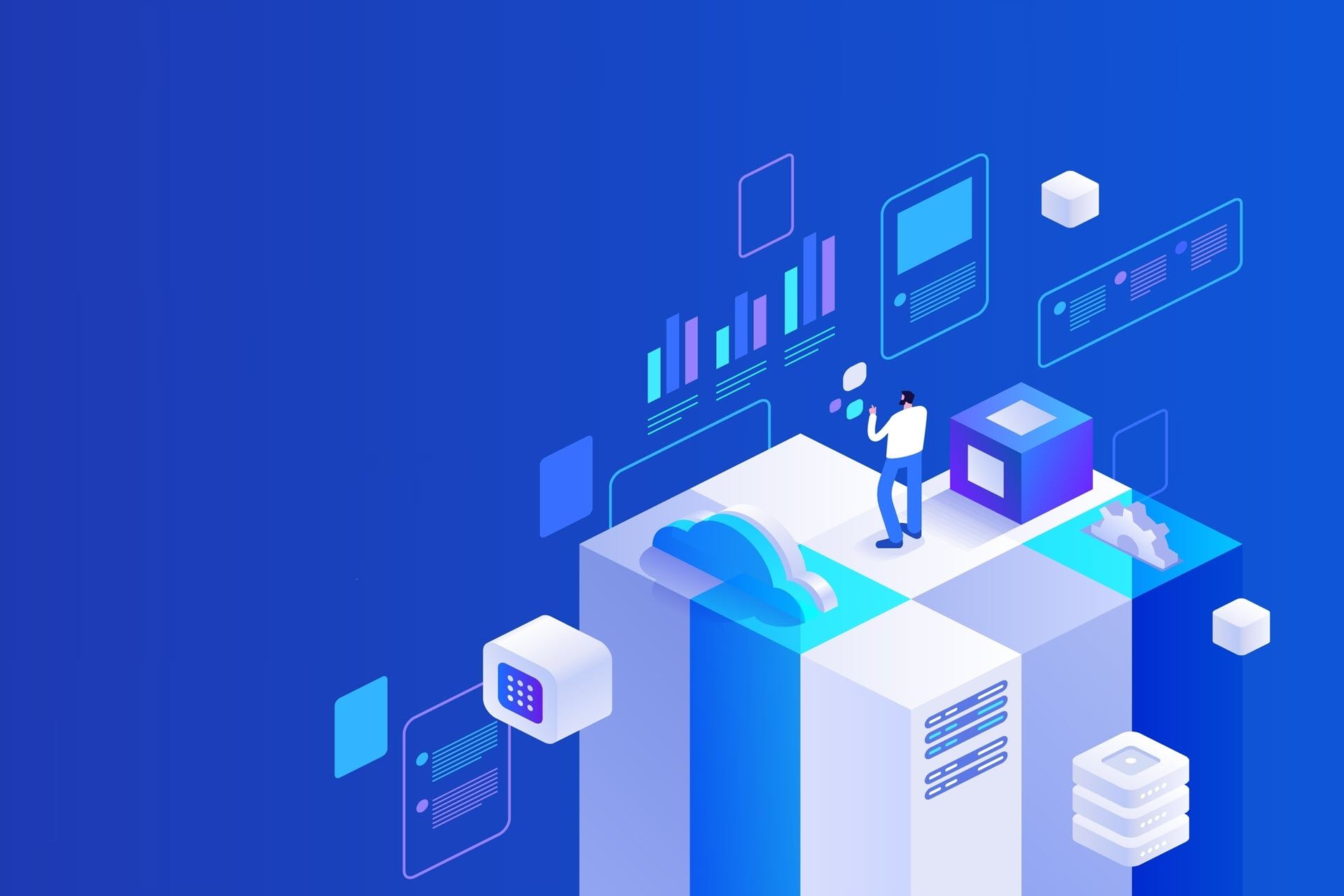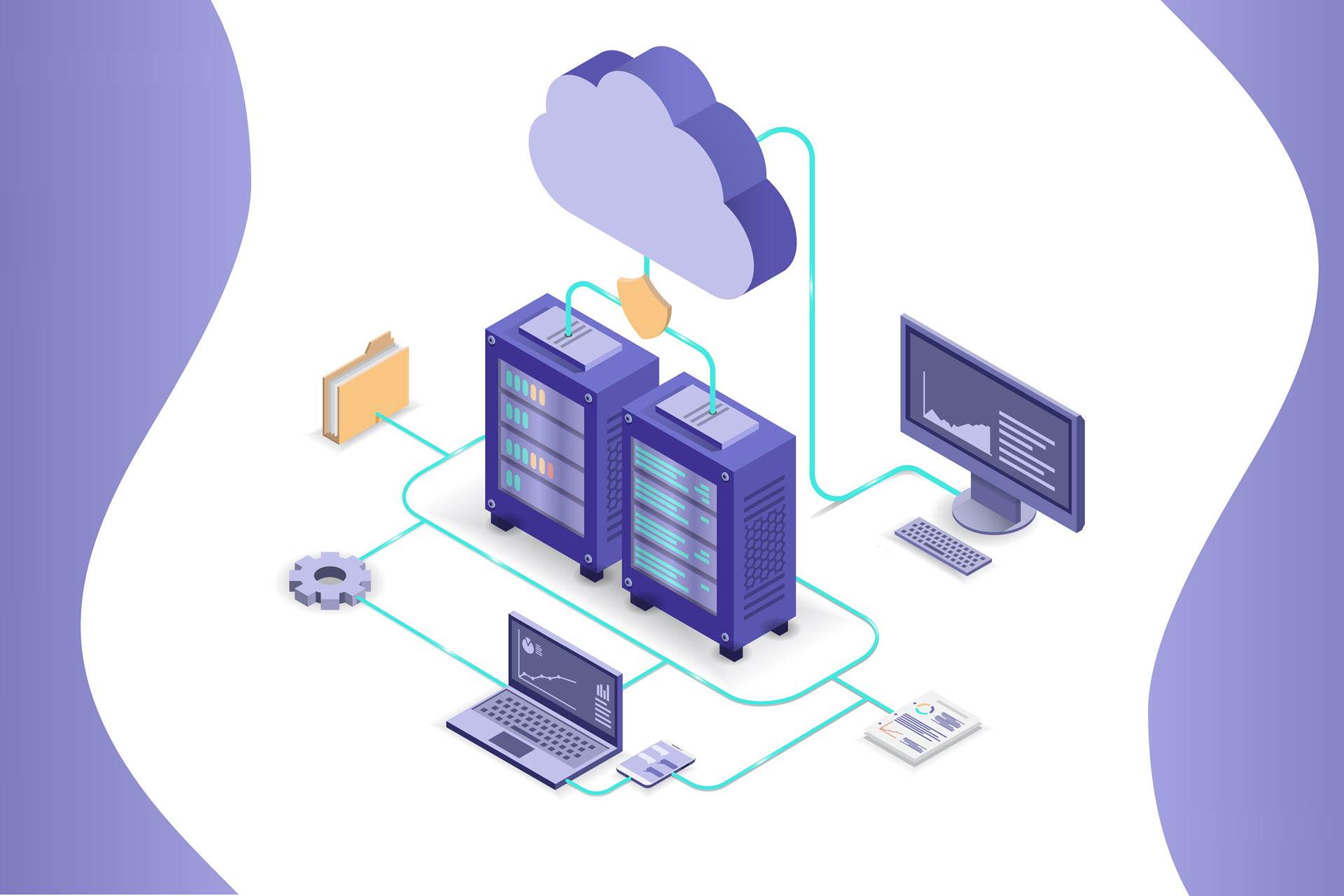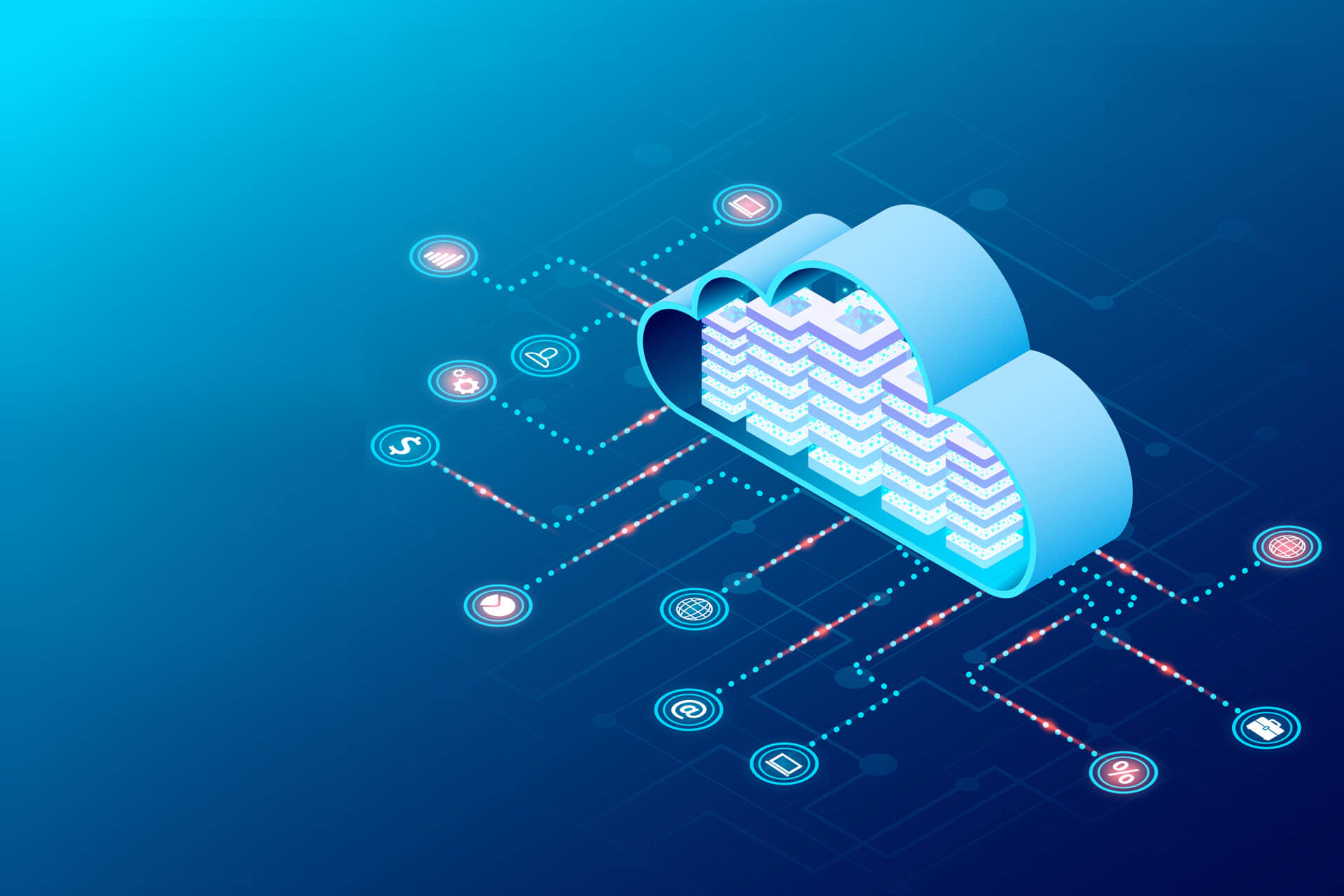The benefits of cloud computing (the ability to access data on the go, the switch from CapEx to OpEx, near-instant scalability, etc.) come with a major trade-off: security concerns. Using the cloud introduces various security risks and challenges, many of which are not as big of a threat in on-prem computing.
If you're planning to migrate to the cloud, you'll need a strategy on how to deal with cloud security risks. And the only way to create an effective security strategy is to understand what you're up against.
This post presents the biggest cloud security risks you must know about if you're considering a move to the cloud. Read on to learn about the main security-related issues, challenges, and threats organizations face when adopting cloud computing.
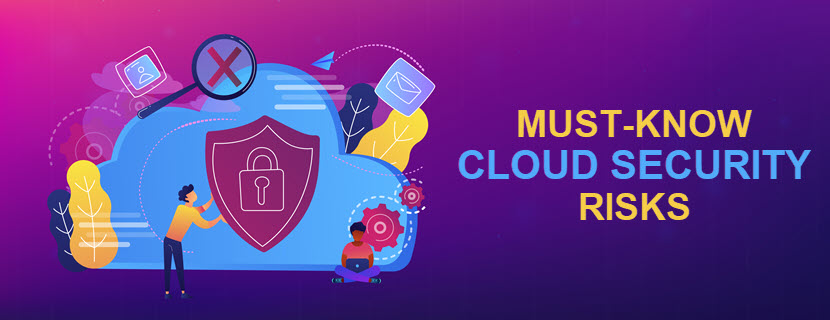
Before jumping into specific threats and risks, check out our guide to cloud security to learn the basics of keeping cloud-based assets safe.
22 Cloud Security Risks, Threats, and Concerns
Nearly 94% of organizations state that they are "moderately to extremely concerned" about cloud security. Here are the main reasons why there's so much worry surrounding cloud security:
- Many organizations have a hard time figuring out where cloud provider's security responsibilities end and their own responsibilities begin.
- There's a lack of visibility into exactly how providers house and protect cloud-based data and assets.
- The expansiveness of the cloud significantly increases the attack surface.
- Many tried-and-tested security controls (e.g., traditional firewalls and IDSes) are less effective when protecting cloud workloads and assets.
Let's dive into the top cloud security risks you must plan for to stay safe while operating in the cloud.
According to Gartner, 99% of all cloud security failures will be due to human error by 2025. Stay safe by ensuring teams understand cloud-related risks and their role in keeping threats at bay.
1. Data Breaches
An increasing number of companies relying on cloud services to store and manage data makes cloud service providers (CSPs) a prime target for data breaches. While providers implement robust measures to boost cloud storage security, data breaches still occur due to various reasons, such as:
- User errors (e.g., misconfigured cloud settings or inadequate access controls).
- Different types of cyber-attacks.
- Inadequate data encryption (either at rest or in transit).
- Third-party vulnerabilities.
Data breaches in the cloud are typically the result of experienced criminals searching for valuable cloud-based data (medical documents, financial records, PII, etc.).
2. Data Leaks
A data leak occurs when there's an unauthorized disclosure of sensitive info (whether intentional or unintentional). Here are the most common causes of data leaks in the cloud:
- Accidental exposures, such as a user unknowingly sharing data with unauthorized recipients or making files public through cloud-sharing features.
- A disgruntled employee or a malicious insider deliberately leaking sensitive data from cloud systems to hurt the organization or make a profit.
- Third-party providers or services with poor integrations with the cloud environment exposing sensitive data.
Most cloud services offer publicly accessible URLs for uploading and downloading files. This feature often results in data leakage if there are improper security controls (i.e., strong link encryption and restrictive access).
In 2017 several groups of experts discovered CPU vulnerabilities introduced almost two decades ago. This discovery led to the investigation of potential methods to exploit them, resulting in what we know as Meltdown and Spectre. These methods, if ever used, would allow attackers to gain access to sensitive information without ever leaving a trace. While there are no documented attacks, organizations must stay vigilant and informed.
Our guide to Meltdown and Spectre explains how these methods work, and ways organizations and individuals can protect themselves.
3. Misconfigurations
A misconfiguration refers to any unintentional glitch or error that occurs during cloud adoption or day-to-day management. For example, an admin could accidentally allow unrestricted outbound access, a setting that causes unprivileged applications and servers to communicate with each other.
Misconfigurations are among the most common cloud security risks and can affect various components of a cloud environment, including storage, networking, and identity management. The most common causes of misconfigurations are:
- Insecure storage.
- Excessive permissions.
- Mismatched access management.
- The use of default server settings and credentials.
- Ineffective change control.
- Improperly configured identity and access management (IAM) policies.
The more cloud networks and environments operate simultaneously, the more difficult it becomes to identify and remediate misconfigurations. Multi-cloud systems are especially prone to misconfigurations since these environments rely on two or more providers instead of a single CSP.
Our guide to multi-cloud security offers an in-depth look at how companies deal with the unique security challenges of multi-cloud deployments.
4. Shared Technology Vulnerabilities
Cloud providers often use shared infrastructure that runs virtual machines (VMs), containers, and resources from multiple customers on the same physical hardware. This shared environment means that vulnerabilities in one tenant's systems may put other customers at risk.
Providers employ various security measures to isolate tenants from each other, such as network segmentation and strict virtualization controls. Flaws in isolation mechanisms can lead to customers being able to move to another tenant's resources, which is a major security risk.
Vulnerabilities in hypervisor settings can also potentially allow an attacker to escape from one VM and gain access to the underlying hardware or other VMs.
5. Resource Exhaustion
Resource exhaustion is a cloud security risk that refers to the depletion of critical computing resources, such as:
If one of these resources gets depleted due to inefficient resource management or scaling policies, organizations may experience one of the following problems:
- Service disruptions and downtime.
- Degraded performance.
- Security vulnerabilities.
While resource exhaustion does not directly impact cloud security, a team preoccupied with resource-related issues is far less likely to detect intrusion attempts.
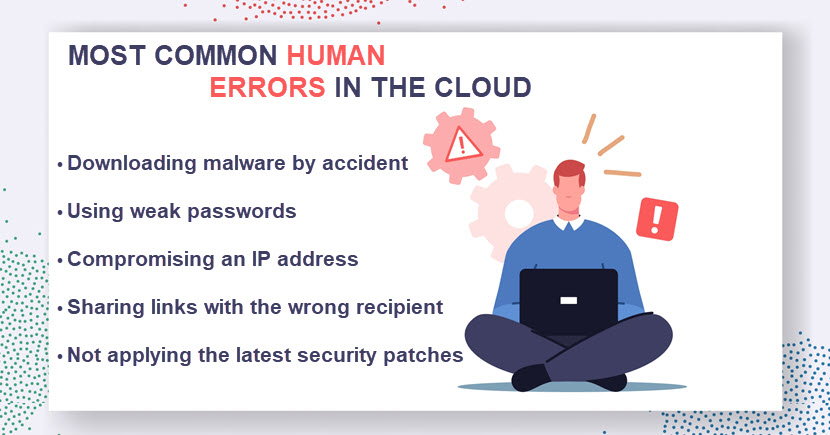
6. Poor Identity and Access Management
Identity and access management (IAM) issues often lead to cloud security risks, such as users having more privileges than they need or someone reusing the same password across multiple accounts. Most IAM issues in the cloud stem from one of the following problems:
- Improper credential protection.
- Challenges with defining roles and privileges.
- Ineffective authentication mechanisms.
- Improper encryption key management.
- Lack of automated key, password, and certificate rotation.
- No MFA authentication.
- Weak or reused passwords.
Tracking, monitoring, and managing cloud accounts becomes even trickier with hybrid clouds. An intruder can exploit an account on one of your on-prem systems and then use lateral movement to pivot into your cloud environment.
Use pNAP's password generator to instantly generate strong passwords no one can guess or crack.
7. External Sharing of Data
Easy data sharing is one of the main draws of the cloud. Users can invite contributors via email or share a link that enables anyone with the URL to access data.
Simple data sharing is helpful, but such a feature is a major security concern. Email and link-based data sharing makes it challenging to control access to resources, which can lead to:
- Accidental sharing of data with unauthorized individuals, which often leads to breaches or privacy violations.
- Someone tampering with shared data, causing data corruption, permanent losses, or the dissemination of false info.
The simplicity of sharing cloud-based data may also lead to situations that cause non-compliance with data protection regulations or industry-specific standards.
8. Insecure APIs
Cloud services rely on APIs to interact with components, third-party services, and external systems. If you do not adequately secure interfaces and APIs, there's a strong possibility they will become an entry point for an attacker.
A hacked interface or API enables a hacker to perform various malicious activities, including:
- Access sensitive data and cause a breach or compromise data integrity.
- Inject malicious software (e.g., spyware, keyloggers, trojans, viruses, ransomware, etc.).
- Execute unauthorized commands on the cloud resources.
Statistically, malicious actors most commonly exploit insecure APIs by injecting code and launching denial-of-service (DoS) attacks.
9. Permanent Data Loss
While most cloud providers offer robust data redundancy and backup mechanisms, the risk of permanent data loss still exists due to the following factors:
- CSPs occasionally experience outages or disruptions that affect data availability. These outages can result from technical issues, natural disasters, or cyber-attacks.
- Accidental or intentional data deletion by users can result in permanent data loss if the organization does not set up proper backup and recovery measures.
- Most cloud services have data retention policies that dictate how long the cloud retains data. If data exceeds the retention period without admins knowing about the time limit, you could experience a permanent loss of files.
Cloud-based files can also suffer data corruption for various reasons, such as hardware failures, software bugs, or errors during data transfers.
Check out pNAP's backup and restore services to see how we help our clients ensure they never experience permanent data loss in or off the cloud.
10. Account Hacking
Most cloud apps only require login credentials for authentication (typically only a username and password). Attackers often attempt to steal user credentials to gain easy access to cloud services, platforms, or infrastructure.
Here are the go-to tactics criminals rely on to steal credentials:
- Phishing: Phishing attacks involve tricking users into revealing login credentials by posing as a legitimate entity. Criminals typically use either deceptive emails or set up websites that mimic trusted vendors.
- Credential stuffing: This tactic involves using stolen credentials from one organization to try to access user accounts at other companies.
- Brute-force attacks: Brute-force attacks occur when an attacker uses an automated tool to guess login credentials. To put the effectiveness of this method into perspective, an average bot can crack a 9-character password with one unique character in around 2 hours.
While less common, some attackers also try to manipulate or deceive individuals in person or via phone. Criminals rely on various social engineering and psychological tactics to get targets to share their login credentials.
11. Session Hijacking
When other account hacking tactics fail, hackers often turn to session hijacking (also known as session fixation). Session hijacking occurs when an attacker gains unauthorized access to a user's active session. The intruder then impersonates the user and carries out malicious activities, such as accessing and exfiltrating sensitive data stored in the cloud.
Here are the most common methods attackers use to hijack sessions in the cloud:
- Man-in-the-middle (MitM) attacks that intercept and manipulate communication between users and cloud services.
- Eavesdropping on unencrypted network traffic to capture session cookies or tokens.
- Cross-site scripting (XSS) attacks that involve injecting malicious scripts into a web app.
- Session fixation in which an attacker sets the session ID to a known value to predict and hijack the session once the user logs in.
- Session replay attacks that capture session data (e.g., login info or session cookies) and then replay this data to impersonate the user.
Successful session hijacking allows an attacker to gain access to a user's account, which potentially compromises whatever data and assets you host in the cloud. Session hijacking also often leads to identity theft issues.
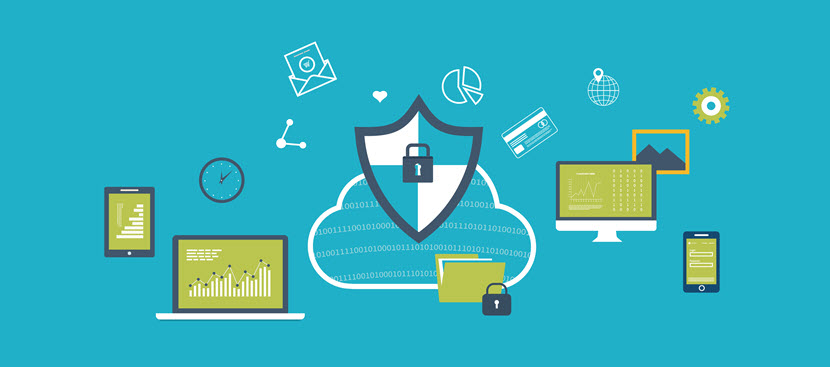
12. Vendor Lock-In Risks
Vendor lock-in occurs when an organization becomes heavily dependent on a particular provider to the extent that it's impossible to change the CSP without significant IT disruption or cost.
While vendor lock-in is primarily a business and financial concern, it can also impact cloud security. Vendor lock-in can restrict the ability to adopt fitting security solutions or tools. Lock-in can also limit the control over cloud-based infrastructure and security policies.
13. Weak Control Planes
The control plane enables an admin to manage and govern cloud resources, configurations, and access controls. A weak or poorly managed control plane often leads to various security incidents, such as:
- Attackers gaining unauthorized access to the cloud management console.
- Insufficient controls causing misconfigurations that make cloud resources susceptible to exploits, data exposure, or service disruptions.
- Intruders escalating privileges and gaining more extensive access to cloud resources and management functionalities.
- Attackers disrupting cloud services, causing availability issues and financial losses.
- Inadequate logging and monitoring capabilities hindering the detection of security incidents and timely incident responses.
Weak control planes also enable more skilled hackers to pull off data exfiltration by manipulating cloud configurations to reach and manipulate sensitive data.
14. Shadow IT
Shadow IT refers to the use of systems, services, apps, and devices without the explicit approval or knowledge of the organization. These assets are not subject to the same security measures and compliance standards as officially sanctioned IT, making shadow IT a major security concern both in and off the cloud.
Here's why shadow IT is among the top cloud security risks:
- Employees who independently adopt cloud services often skip setting mandatory security controls and compliance measures.
- IT departments have limited to no visibility into shadow IT systems, which makes it challenging to monitor, manage, and respond to security incidents.
- Teams using shadow cloud instances store data on unapproved cloud services, potentially leading to data privacy violations and non-compliance with data protection regulations (e.g., GDPR or HIPAA).
- Shadow IT resources typically lack reliable backup and recovery procedures, so any data residing on these systems is at risk of permanent loss due to accidental deletion or system failures.
- Shadow IT systems typically do not integrate well with the organization's existing infrastructure, which often leads to operational inefficiencies and potential vulnerabilities.
Uncontrolled adoption of cloud services also often results in unexpected expenses and cost overruns since these services lack official budgeting and monitoring.
Our article on shadow IT provides a detailed look at this common problem and offers guidance on how to prevent teams from using unsanctioned devices and apps.
15. Lack of Visibility
Cloud-based resources operate outside of the corporate network and run on third-party infrastructure. Such a setup limits an organization's ability to monitor and protect resources.
The lack of visibility into the activities within a cloud environment can lead to various security challenges, including:
- Limited ability to detect and respond to security threats.
- Bigger chance of unnoticed misconfigurations.
- More risk of non-compliance with regulatory requirements.
- Performance bottlenecks, anomalies, or resource overutilization.
- Difficulties in enforcing access controls.
- Inability to understand the correct scope and impact of incidents.
Without proper visibility, it's also difficult to monitor resource utilization, analyze trends, and optimize resource allocation. As a result, companies often struggle with inefficiencies and cost overruns.
16. Zero-Day Exploits
Zero-day exploits enable attackers to target vulnerabilities in software, apps, and systems unknown to the vendor. These exploits are a severe cloud security risk as they potentially enable an attacker to:
- Gain unauthorized access to cloud-based systems.
- Disrupt services and cause downtime.
- Compromise and tamper with data residing in the cloud.
- Gain access to cloud accounts and further attacks via privilege escalation.
Unpatched and unknown bugs are a major concern both on-prem and in the cloud. Learn more about this cyber threat in our in-depth article on zero-day exploits.
17. Malware Infections
Malware (short for malicious software) is an umbrella term for a wide range of programs criminals use to compromise the security, integrity, or availability of systems and data. In a cloud computing environment, attackers often use malware to perform the following activities:
- Corrupt, delete, encrypt, or steal files.
- Gain unauthorized access to cloud accounts or resources.
- Spy on traffic and user activity.
- Infect cloud instances and use them for malicious purposes (e.g., mine cryptocurrency).
- Disrupt cloud services and cause downtime, disruptions, and financial losses.
Advanced forms of malware have propagation capabilities, so programs can spread on their own once inside a cloud environment. That way, malware affects multiple instances or services, causing widespread damage and complicating remediation.
18. Resource Misuse
Unauthorized users or malicious insiders can abuse cloud resources without permission, intentionally or accidentally causing security and operational issues. Common examples of resource misuse in the cloud include:
- Running excessive or unnecessary virtual machines.
- Neglecting or forgetting to shut down unused resources.
- Over or under-allocating cloud storage.
Resource misuse often creates security vulnerabilities, such as unprotected instances or VMs that could become an easy entry point for intruders. Service disruptions are also common since excessive or inappropriate use of resources affects the availability of cloud-based apps and services.
Unauthorized and inefficient resource use is among the leading causes of needlessly high cloud computing costs.
19. APT Attacks
Advanced Persistent Threats (APTs) are highly sophisticated cyber-attacks typically orchestrated by well-funded and skilled criminal groups. The primary goal of an APT is to infiltrate and maintain unauthorized access within the target network or system over an extended period.
APT threat actors use a combination of attack vectors (malware, custom exploits, social engineering, etc.) to breach cloud resources and gain access. Once inside, attackers silently exfiltrate valuable data or conduct espionage activities.
20. DDoS Attacks
Distributed Denial of Service (DDoS) attacks enable a hacker to overwhelm a target system, network, or service with an excessive volume of traffic. Attackers use a botnet to send extreme volumes of requests until the target system becomes inaccessible to legitimate users.
DDoS is among the most significant cloud security risks since these attacks:
- Disrupt cloud services.
- Lead to prolonged downtime.
- Negatively impact the availability and performance of cloud-based apps and resources.
- Cause data losses or corruption by crashing services during data processing.
Remember that skilled hackers often use DDoS attacks as a distraction to cover other malicious activities. DDoS is the go-to diversion tactic when an intruder is trying to exfiltrate data or gain initial access to a system.
Learn how to prevent DDoS attacks and see how experienced security teams deal with this IT threat.
21. Third-Party Risks
Organizations that use cloud computing often rely on external entities to provide components and services that support the cloud infrastructure. Cloud users frequently rely on third-party providers for services like:
- Storage.
- Content delivery networks (CDNs).
- Authentication services.
- External APIs.
If someone compromises a third-party provider's infrastructure, all users are automatically in danger. For example, a compromised CDN could distribute malicious content to multiple websites that, on their own, might have otherwise sound security measures.
22. Unmanaged Attack Surface
Before cloud computing, companies would store all data in one location, which made it much easier to keep assets safe with traditional castle-and-moat network security.
With cloud computing, it's not always clear where users house data and who's responsible for keeping it safe. As a result, the average attack surface is growing exponentially. In 2022, an average company's attack surface expanded by 67%, a problem that leads to several cloud security risks:
- A larger and unmanaged attack surface means more potential entry points for attackers.
- An unmanaged attack surface often leads to misconfigurations and mistakes in cloud security settings.
- An increase in unused or abandoned cloud resources that lack proper decommissioning or monitoring.
Check out pNAP's Data Security Cloud, a highly secure cloud-based platform that keeps assets safe with strict virtualization and segmentation controls, advanced threat intelligence, and top-tier physical precautions.
Cloud Security Best Practices
Here's a list of best practices you should rely on to minimize cloud security risks:
- Keep all cloud services, VMs, and containers up to date with the latest security patches.
- Use multi-factor authentication (MFA) for all user accounts.
- Use enterprise password management to centralize credential handling and ensure everyone in the organization uses strong passwords.
- Define and enforce company-wide cloud security policies. Remember to regularly review and update policies to adapt to evolving threats.
- Implement zero-trust security and the principle of least privilege (PoLP) to restrict access to cloud-based data and assets.
- Regularly review and revoke unnecessary access.
- Encrypt data both at rest and in transit with strong encryption algorithms. Also, ensure the team follows key management best practices.
- Set up robust logging and cloud monitoring to ensure teams detect security incidents promptly.
- Regularly back up all your data and configurations, plus occasionally test backups to ensure there's no file corruption.
- Regularly assess the security practices of your cloud service provider and ensure the vendor meets your current security requirements.
- Protect APIs with advanced authentication and authorization mechanisms.
- Regularly review and update all API security policies.
- Maintain an up-to-date inventory of cloud assets and resources to ensure the security team has a complete overview of what they are protecting.
- Remember to decommission and archive unused resources.
- Carefully assess and manage the security risks associated with third-party tools, integrations, and services.
- Run regular vulnerability assessments to proactively find flaws and exploits in cloud systems.
- Perform occasional penetration tests to see how your cloud environment and security team respond to realistic attack simulations.
Remember that most cloud-related incidents result from human error. Organize security awareness training to ensure employees understand their role in preventing and dealing with cloud security risks.
While Alarming, Cloud Security Risks Are Not a Deterrent
Despite the cloud security risks discussed above, nearly 94% of companies rely on cloud services to run servers, host apps, or store mission-critical data. That figure indicates that most organizations are willing to take on the security risks of using the cloud. You should follow the same logic—despite adding a few new security concerns, the cloud is too beneficial of a tech to ignore.
